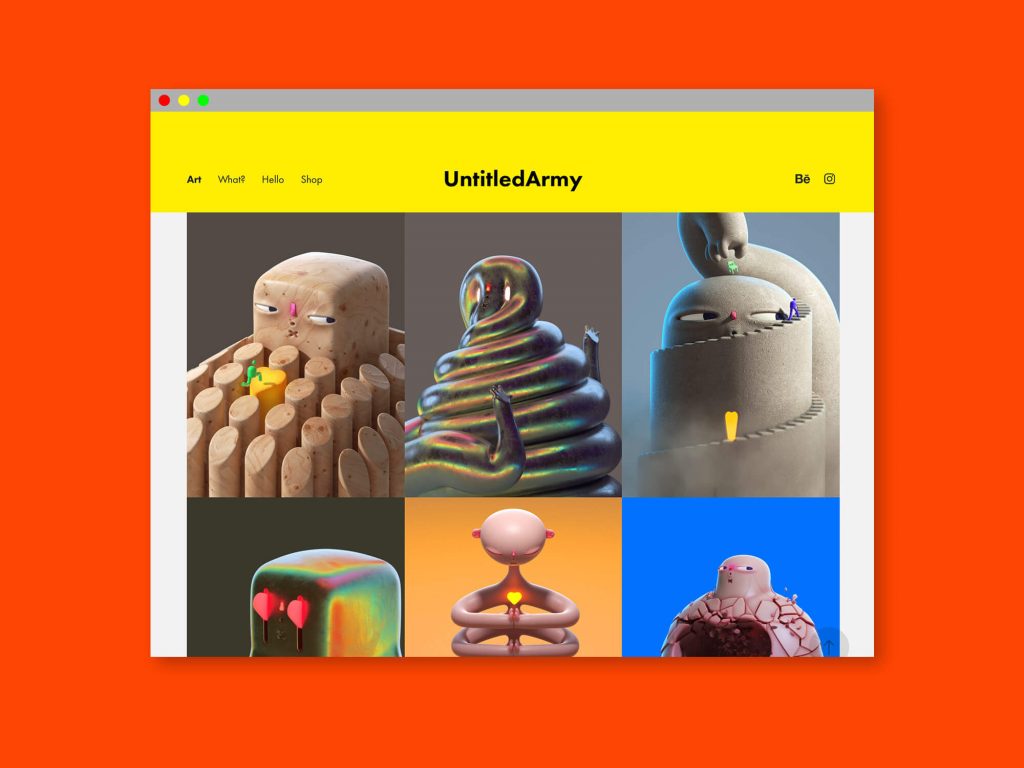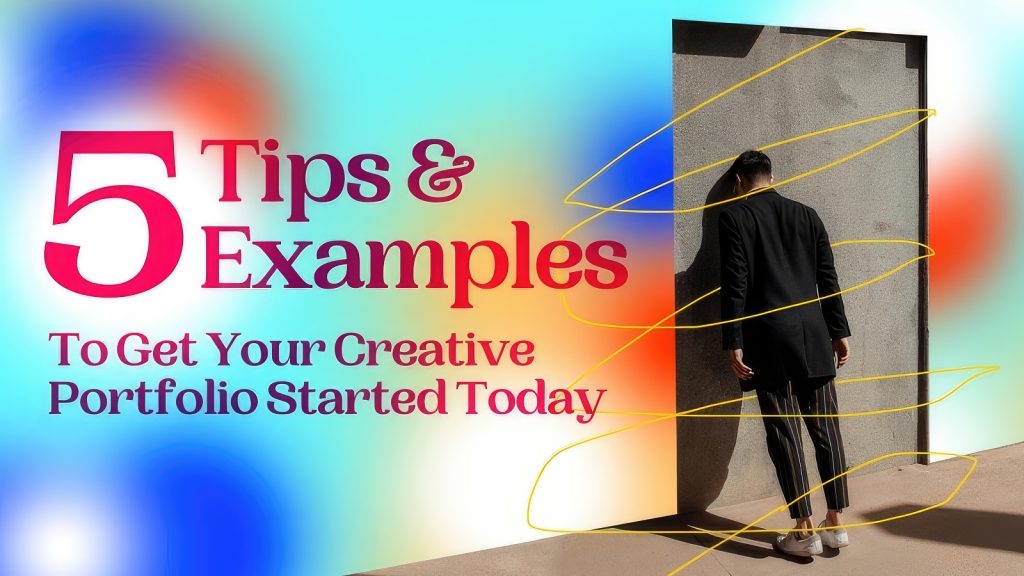Whether you are just about to start your creative career or building your way up, a creative portfolio is a valuable tool that will help you level up.

Support Wellfed – This platform is made possible by your support. If you enjoy any of our content, please consider joining one of our Patreon memberships here.
I was recently adding some new work to my website when I thought back to my very first creative portfolio. Creative portfolios come in a variety of shapes and sizes and can include as little as 3 projects all the way up to dozens. If you’re thinking about going to school for art or applying for a job in the creative industry then chances are you will have to submit a creative portfolio. Hopefully this article will be helpful.
A creative portfolio is a collection of creative work that showcases your thinking, technical abilities and aesthetic choices. A creative portfolio can include photographs or high resolution scans of the works you’ve made. You can showcase your creative portfolio on a website, digital PDF, or print physical copies.
In the rest of this article I’ll go over what a creative portfolio is used for, the types of creative portfolios, what goes into one, and how to make your own.
What are creative portfolios used for?
A creative portfolio is something that you will always have if you decide to live a life working in the creative industry. Creative portfolios can be used to showcase your work in a few different scenarios that I have listed below.
- Creative portfolios can be used when applying to visual arts programs in high school or for college. Schools and Universities usually ask for creative portfolios as a part of the student application process. Incoming applicants can be asked to submit 10-20 images of their strongest work along with some other materials. Each school will have different requirements when submitting a portfolio so make sure to check the guidelines if you are looking to apply.
- Creative portfolios can be used when applying for jobs in the creative industry. If you are pursuing a career as a graphic designer, illustrator, photographer or other creative role, companies will ask for creative portfolios as a part of the job application. Companies will review portfolios to make sure the applicant’s work aligns with the company’s values and goals.
- Creative portfolios can be used when pitching work to potential clients or partners. If you are more experienced in your creative career then a creative portfolio will be your tool for winning new business and attracting more clients. New clients, whether they are founders of a startup or a director within a larger company, love to see portfolios with your previous work. This will help them decide if your work and creative approach aligns with their mission.

The types of creative portfolios
Now that you have a better understanding of how a creative portfolio will be used, we can discuss the two different types of creative portfolios.
Printed Creative Portfolios
The first type of creative portfolio-and the slightly more traditional-is the printed portfolio. A printed portfolio is a physical collection of your work printed on paper and organized using folios or folders. This can sometimes be referenced as your ‘book’ of work. There are different approaches to how you may want to create your printed portfolio depending on the creative role you are pursuing. As a designer I have created my printed portfolio as a PDF that I can print out and bring with me for any job interviews or client pitches. If you are looking for some help getting started then don’t worry. I created a creative portfolio pdf template that you can download here to get you started quickly. I print out this creative portfolio PDF and bring it with me for every job interview that I go on so I hope that you find it helpful as well!
Digital Creative Portfolio
The second type of creative portfolio is the digital portfolio. A digital creative portfolio is exactly what it sounds like. It is a collection of your work that has been digitized for use on the web or sharing through communications like email. These can be photographed images or digital scans from the projects you have completed. Your digital creative portfolio will act as your personal billboard on the web to advertise your creative skills and abilities. If you would like to learn more about building your creative portfolio online then sign up for our newsletter here so we can notify you when we publish our next article.
What goes into a creative portfolio?
Creative portfolios can include a variety of work from projects you completed recently or from years past. The biggest thing to keep in mind is that your creative portfolio should contain your strongest work. Whether you are applying for a visual arts program or pitching a new potential client, this should be the work you are most proud of and want to show everyone.
Although a creative portfolio will be a tool that you will keep with you for your entire creative career the work inside will constantly change depending on your goals. As I mentioned a creative portfolio can be used when applying to an arts program. Although the guidelines will be different for each application, the work you may want to include will show a variety of your interests as you enter a new chapter in your creative career. If you are applying for a job that requires a creative portfolio as part of the application, you will want to tailor the work you include in your portfolio to align with the type of that company creates. The same guideline applies when also pitching new clients and partners.
How to make my own creative portfolio
Now that we know how creative portfolios are used, the types of portfolios, and what goes into one, you are ready to start making your own creative portfolio. Below I have listed some tips to get you started today!
- Gather – depending on what your goal is make sure to gather all of your work that you have completed and are really proud of. Don’t be afraid to pull in work that you created years before or that you just finished.
- Organize – now that you have a nice sized collection of your projects, try to put them in an order as if you were creating chapters in a book. You can do this by the medium you used, colors, subject or other themes you can come up with. This will help when presenting your work to others.
- Document – after your work is organized you can now photograph or scan it so that it can be included into your creative portfolio. During this step you want to make sure do everything in your power to create fantastic results. That includes reaching out to friends who may be better at photography to help out with photos or going to your local office supply store to use their high-resolution scanner. If you are photographing your work you also want to make sure details such as backgrounds and lighting are all inline.
- Organize Again – yes you want to take another moment to organize your work again. Take a step back and look at your finalized photographs and scans. Make sure everything looks like it belongs in your creative portfolio.
- Publish – finally you are at the last step of making your own creative portfolio. At this step there should be no doubts about any of the work you included. Everything is looking it’s best and you are ready to share with the world…or just the next job application.
Conclusion
Whether you are just about to start your creative career or are currently building your way up, a creative portfolio is a valuable tool that will help you level up within the creative industry. I hope you found this article and steps for getting you started on your creative portfolio today helpful. If you would like more detailed tips and articles about building your creative portfolio then signup for our newsletter here. This will help us learn what we should write next.


